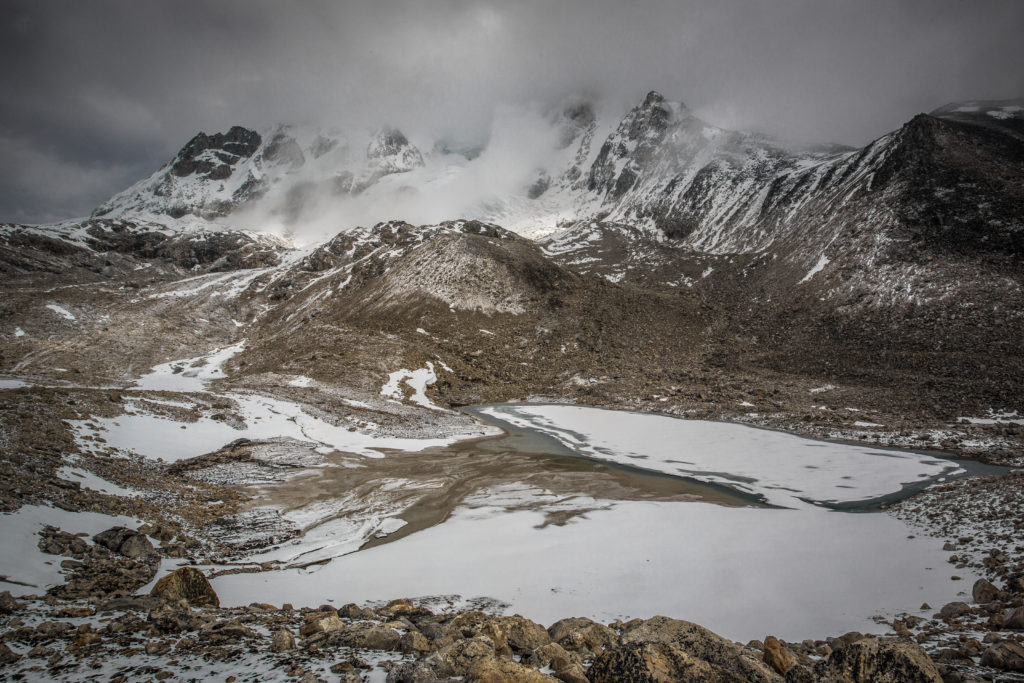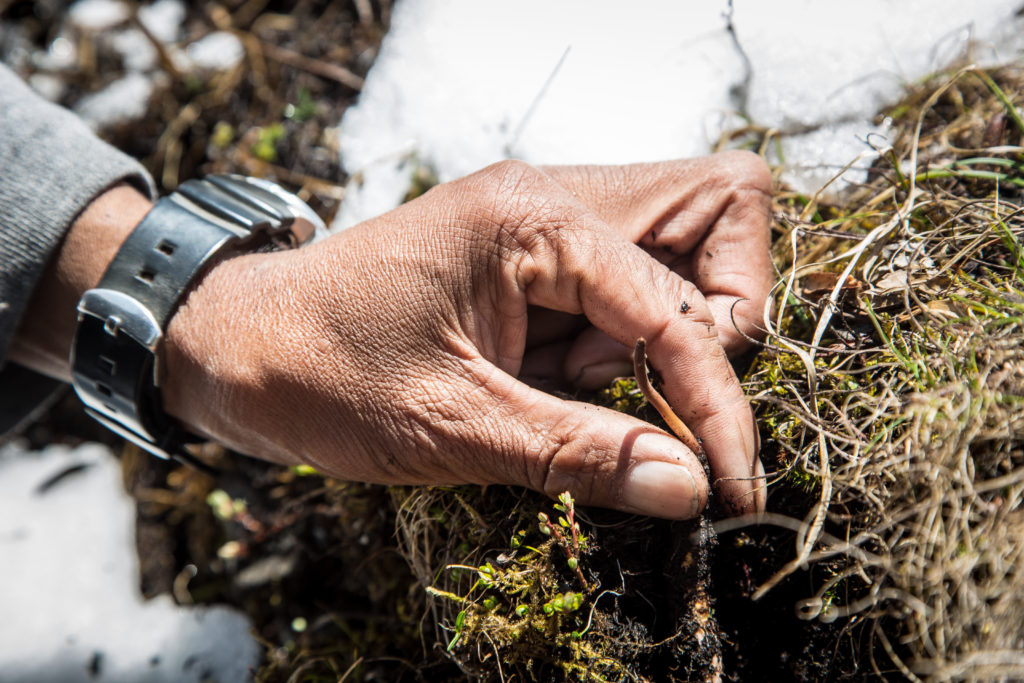High up in certain remote valleys of the Himalayas there exists something so unlikely that it doesn’t seem real.
No, I’m not talking about the yeti (that is a story for another day…) I am referring to something else entirely. Much smaller, perhaps more bizarre and certainly of much more value, yarsagumba has dramatically changed life in parts of the Himalaya in the last two decades.

In Tibetan ‘yarsagumba’ means ‘winter worm, summer grass’. It’s an unlikely combination of caterpillar and fungus that occurs only in the highest Himalayan pastures for just a few short weeks each year before the monsoon starts.
The caterpillar is the larva of the ghost moth (of which there are numerous species), and it is unusual in that it lives a few centimetres underground feeding on the roots of grasses in Himalayan meadows at an altitude of about 4,000–5,000m.

Cordyceps sinensis is an entomopathogenic fungus (one which grows on insects) that parasitises the caterpillar, slowly killing and mummifying it.
From the tiny corpse, a dark-coloured, stalk-like fruiting body a few centimetres long grows out of the victims head and pokes a centimetre or so out of the ground. It takes a great deal of patience and a trained eye to spot it among the stubby grasses where yaks graze.

A medicinal ‘cure-all’
Yarsagumba might not look like much to get excited about, but in some parts of the Chinese world it has long been used as a traditional medicine.
It’s little known in the west, and when it is mentioned it’s normally described as a ‘natural Viagra’. However, in the parts of Asia with large Chinese communities, it’s touted more as a feel-good, cure-all, treatment that boosts energy and stamina.

This reputation for being an almost-magical remedy has given yarsagumba the nickname of ‘Himalayan gold’, and it’s a highly apt moniker.
In Nepal and Bhutan (in the Indian Himalaya the gathering of yarsagumba is illegal), middlemen transport the yarsagumba from the villages to the big towns and cities from where they are sent to China and Chinese communities in southeast Asia (Singapore is a particularly big market).
Yarsagumba can sell for a staggering US$40,000–50,000 per kilo. At times the price has gone as high as US$110,000 (in Beijing in 2012), and at the time of writing a kilo of gold is worth US$59,000.

Needless to say, the mountain villagers collecting yarsagumba aren’t earning anything like US$50,000 a kilo. Even so, the average family can make around US$900 a year from it, which is a significant amount for many communities. In some parts of Tibet, yarsagumba is thought to generate 40% of all cash income for villages.
The early bird catches the worm
Gathering yarsagumba is a time-consuming effort that involves walking the upper valley slopes for hours on end in a painful, stooped position – or even on all fours, eyes locked to the ground searching for that one tell-tale darkened stalk poking out above the grass.

Children, with their younger, fresher eyes, are generally considered experts at finding it. In many regions, schools close over the yarsagumba harvesting period so that the kids can join their parents (and teachers) on the slopes looking for it. Mules are often used to carry crate-loads of yarsagumba down out of the mountains.
Huge temporary camps are set up close to the areas where yarsagumba is found. Unfortunately, these camps contribute to deforestation and piles of rubbish are often left behind after the camps are dismantled.



At the end of the day, people return to their houses or temporary camps in order to clean and sort the day’s findings. Toothbrushes are used to carefully clean each valuable caterpillar.
In some areas, though, such as in valleys with a large Buddhist monastery, the gathering of yarsagumba is banned for religious reasons.

This is the case on the pastures around the small monastery and meditation caves in the Mansaslu area.
Each village or community is designated the rights to a certain area and the collecting season is limited to about three weeks, which opens and closes on specific days depending on the region.
If someone from outside a given community is seen harvesting yarsagumba – or even just randomly walking the mountain-sides – then the community with the harvesting rights to that area will investigate.
The money made from yarsagumba has drastically improved life in many remote Himalayan communities.
Electricity supplies have been installed, children can afford to be sent to good schools in the cities and a more varied diet is now available to villagers. I have even seen yak-herding nomads in Bhutan hiring helicopters in order to go and check their livestock on the high grasslands!
More information
Stuart Butler is the author of the Bradt guide to Benin, and has updated a number of other books, including Bradt’s guidebook to Ladakh. To see more of Stuart’s photography, follow him on Instagram.